In the world of home automation we've seen all sorts of helpful gadgets from cameras to smart locks, many of which are "smart" versions of items that we commonly find in our homes. One such item is the humble doorbell which has gotten a fresh rework in the form of the $199 Ring video doorbell.
The premise of the product is pretty simple. Whether or not you are actually home, you can make people think you are with a WiFi connected doorbell. Additionally, a camera in plain sight on the device could deter people with malicious intentions all by itself. While this isn't the first video doorbell, it aims to make replacing, setting up, and using such a system easier and much more approachable for home owners.
It accomplishes this by taking an approach we have seen from many companies like Nest and August. For starters, everything you could possibly need to set up the system is in the box (you will still need a drill though). Upon opening the front flap you are presented with the doorbell, masonry bit, screws, screw driver, and mounting plate which also has a convenient level attachment. Installation works in one of two ways. If your home already has a doorbell, you can tie in the Ring to your existing wiring to keep it charged. Additionally, tying it in to your existing wiring means pressing the button on the Ring will still trigger your existing inside bell or buzzer. Alternatively, the Ring has a built in battery that will last up to 6 months, in case your home doesn't have existing wiring, or is simply happens to be incompatible with it.
After removing the existing doorbell I lined up the mounting plate and marked the holes to be drilled. Unfortunately, the masonry bit they include was no match for my home's brick. Your mileage may vary, but I had to run to the local hardware store to pick up a better one. After the holes were drilled, I screwed in the mount plate and wired it up. Depending on your doorbell's previous wiring, you may have to screw in the (also included) diode across the two terminals. My home's doorbell was a mechanical style chime, which does not require it, so I skipped this.
Next I slid on the Ring door bell and fastened the security screws at the bottom of the device, which ensures somebody can't just run up to my front door and sneak off with it. In case somebody does happen to steal it though, the company behind Ring says they will replace it for free, which is a nice gesture - though we hope it never comes to that. All in all it took about 20 minutes to install, not including a trip to the hardware store.
Regarding the device itself, the top of the device where the camera is located is black glossy plastic. After I mounted the Ring, the shiny surface already had scratches on it, and I do question how well it will weather. I also wonder how water and dust resistant the Ring is, as rain and dirt do blow into the patio area. Their site does say it is certified for outdoor use, and after giving it a good spraying with the water hose, the doorbell continues to operate as expected.
The camera is a fish eye style which means that you get a full 180 degree field of view. This does mean that when you mount your doorbell to one side of your door, you may get a nice big view of a brick wall, depending on how your house is set up. Finally, though the Ring comes in nice anodized aluminum color, you can swap this for plates that might suit your home's style better.
While many video doorbells we have seen in the past come with a screen or home base, the Ring instead has an app that is available on iOS, Android, and as well as PC and Windows 10 Mobile  through their Universal Windows App. Within the app you can setup your Ring door bell, the wireless Ringer, or one of the newly announced Stick Up Cam fresh out of CES 2016. The app allows you to set motion settings and sensitivity as well as see a history of events, which are helpfully categorized.
through their Universal Windows App. Within the app you can setup your Ring door bell, the wireless Ringer, or one of the newly announced Stick Up Cam fresh out of CES 2016. The app allows you to set motion settings and sensitivity as well as see a history of events, which are helpfully categorized.
The camera quality and audio quality is good enough to make out faces and distinguish voices. The camera here is 720p which falls into HD territory, but I really wish it was 1080p. Image and sound quality is largely going to depend on connection quality, if you are out of the house and somebody rings the bell. One of my biggest complaints is that there doesn't seem to be a way to view a live feed of the front door without somebody triggering it, so if I wanted to utilize the camera to check for a package at the front door, I'm out of luck. I could still search through the video history to find the delivery man dropping off the package, but I feel like this is something that should be offered.
How does it work after getting it all set up? After hitting the button on the doorbell and letting the led ring swirl around for a few seconds, the iPhone and Windows Mobile device I had set up with it were notified and given options to answer. Past that, it was usually a couple seconds more to get to the point where you were looking at and talking to the person on your doorstep. While I do wish it was a little faster, I can't be too picky, especially if I'm out and about on spotty cellular data. The bottom line is that it works, and gets the job done. Even if the video is spotty at the time, it's worth mentioning that the video uploaded to the Ring cloud will be full 720p quality.
 Of course, if you want to record all of these video clips and store them in the Ring cloud, the service has monthly cost of $3 or $30 if you pay annually. It comes with a free 30 days from the start, which allows for some time to decide if you actually want to pay for the service. Considering options like Nest's Aware subscription service start at $100 a year, $30 is pretty easy to digest. If you don't want to fork over any extra money, you will still get alerts and the ability to answer rings.
Of course, if you want to record all of these video clips and store them in the Ring cloud, the service has monthly cost of $3 or $30 if you pay annually. It comes with a free 30 days from the start, which allows for some time to decide if you actually want to pay for the service. Considering options like Nest's Aware subscription service start at $100 a year, $30 is pretty easy to digest. If you don't want to fork over any extra money, you will still get alerts and the ability to answer rings.
While the doorbell is designed in the name of security, that doesn't mean the Ring video doorbell hasn't been without its issues. Just recently it was reported that the doorbell had a flaw that allowed anybody with brief access to the hardware to tap into the doorbell's http server and steal the owner's Wifi password, which was left unencrypted in plain text. While the issue was speedily resolved, the doorbell has been on sale for months, with the issue going undetected. And while it's unlikely somebody would be able to get access to your doorbell without you being notified, the issue is enough to make potential purchasers think twice.
Overall, the Ring video doorbell represents a cool and convenient twist on something almost every house has. Since almost everything is included (assuming the bit doesn't break on you and you have a drill handy), it's easy enough to setup without professional help. All-in-all, if you need the extra security and find yourself away from the house a lot, the Ring video doorbell is definitely worth considering. With support for iOS, Android, and Windows 10, and a reasonable $30 annual cost, you'll be hard pressed to find a cheaper option with the same operating system indifference. While the home automation space is still rapidly growing, this is one of the best video doorbell options I've seen to date, and is definitely a top pick.






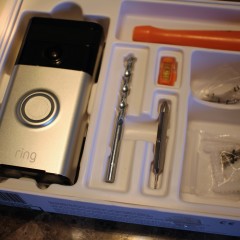
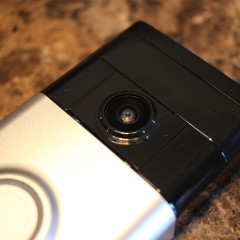
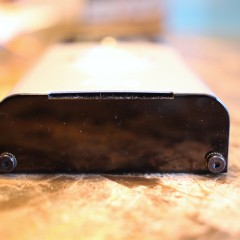


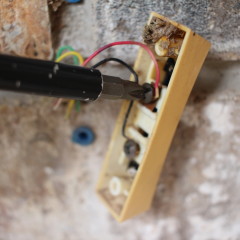
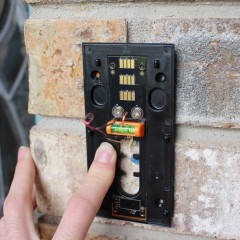
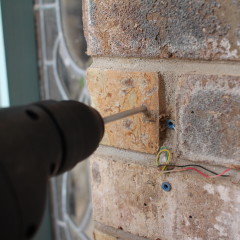
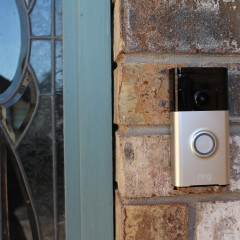
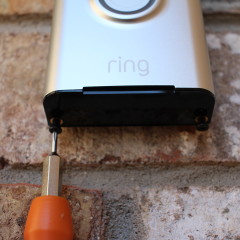
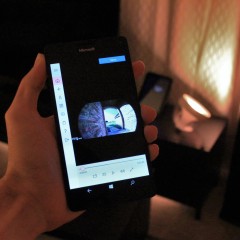








17 Comments - Add comment